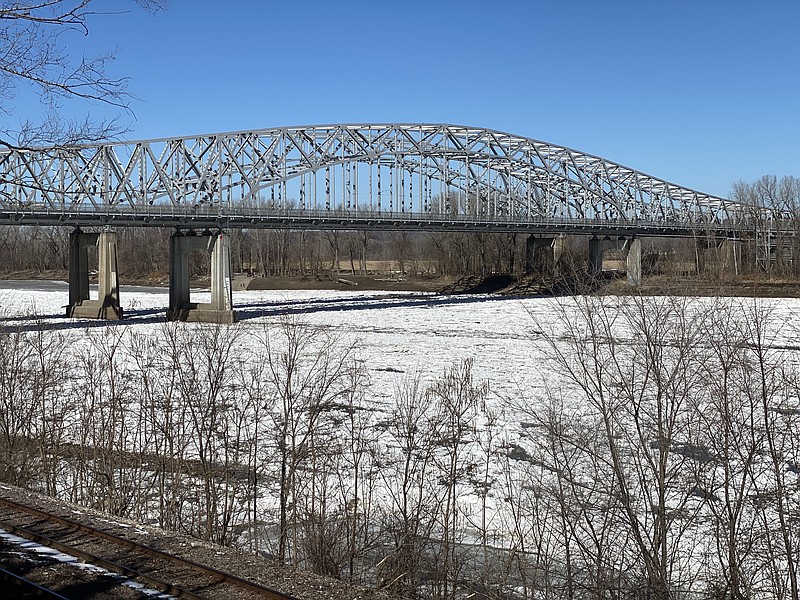Officials don't expect any issues to arise as the ice jam that formed in the Missouri River last week breaks down.
John Carney, meteorologist at the National Weather Service in St. Louis, said the ice began breaking down Tuesday.
The ice formation first occurred Feb. 16, about 5 miles upstream from the Missouri River Bridge near Jefferson City.
The river level rose to about 10 feet, he said.
The lowest it got with the ice jam was -0.5 feet below zero on the gauge at the Missouri River Bridge on Friday.
The record low level occurred in February 1908, when it hit -1.1 feet below zero gauge.
Carney expects the level to go back down as the river settles.
"Think of it like a dam failure in the river there," he said. "When that dam fails, you're going to have a wave that washes down the river. As it continues to move downriver and away from Jefferson City, the river level will start to fall slowly."
That 10 feet is about the estimated peak before it is expected to fall again.
"It's going to go up just a hair over 10 feet and then start to slowly fall again," Carney said.
As such, Carney said, the NWS doesn't expect any flooding or adverse effects. The flood stage in Jefferson City is 23 feet, he explained, and the breakdown of the ice jam isn't expected to bring the river anywhere close to that point.
Ameren Missouri officials said they continue to monitor Bagnell Dam on the Lake of the Ozarks but don't expect the ice jam to cause any issues there. The dam experienced a decrease in discharged water while the ice jam was within the Missouri River.
Previously, officials said Bagnell Dam's average discharge is between 35,000-36,000 cubic feet per second. The lowest it reached over the last four days was 6,400 cubic feet per second.
Officials also didn't see an impact on water services.
Missouri American Water installed a new intake system in 2011, said Brent Haas, manager of operations for the company in Jefferson City. This system is 30 feet deeper and extends 80 feet farther into the river than the system installed in the 1960s, he explained.
"We are monitoring the situation," he said.

